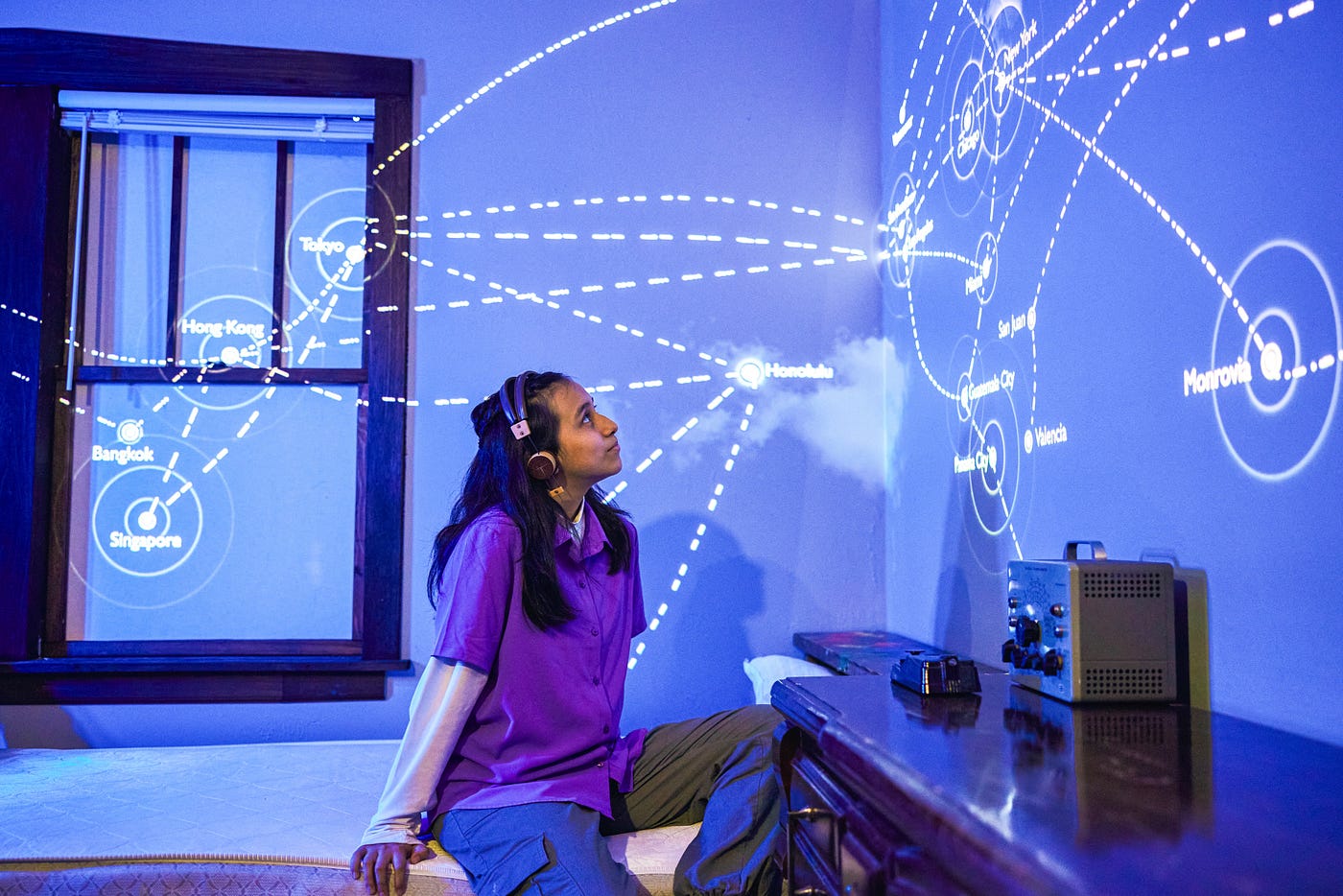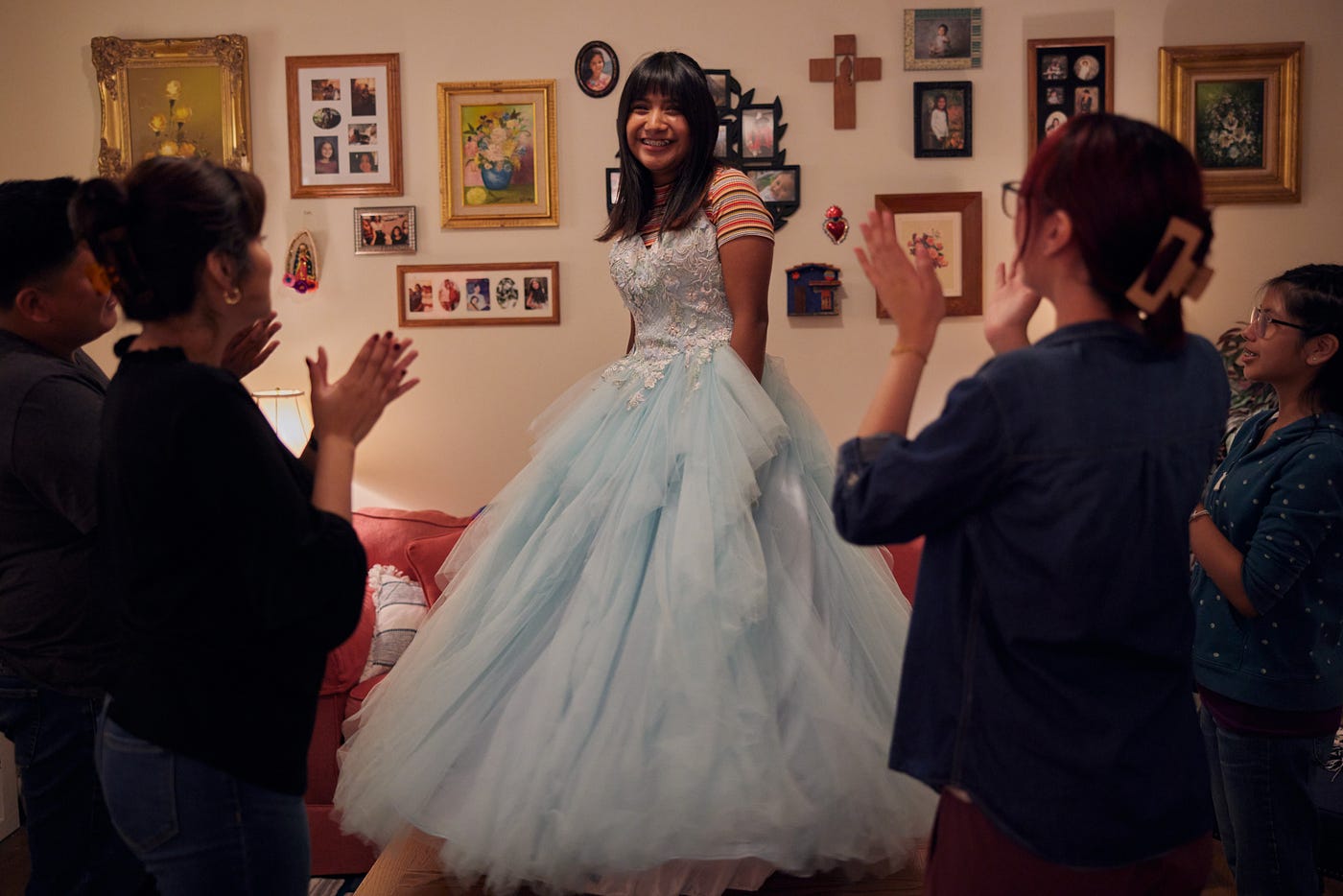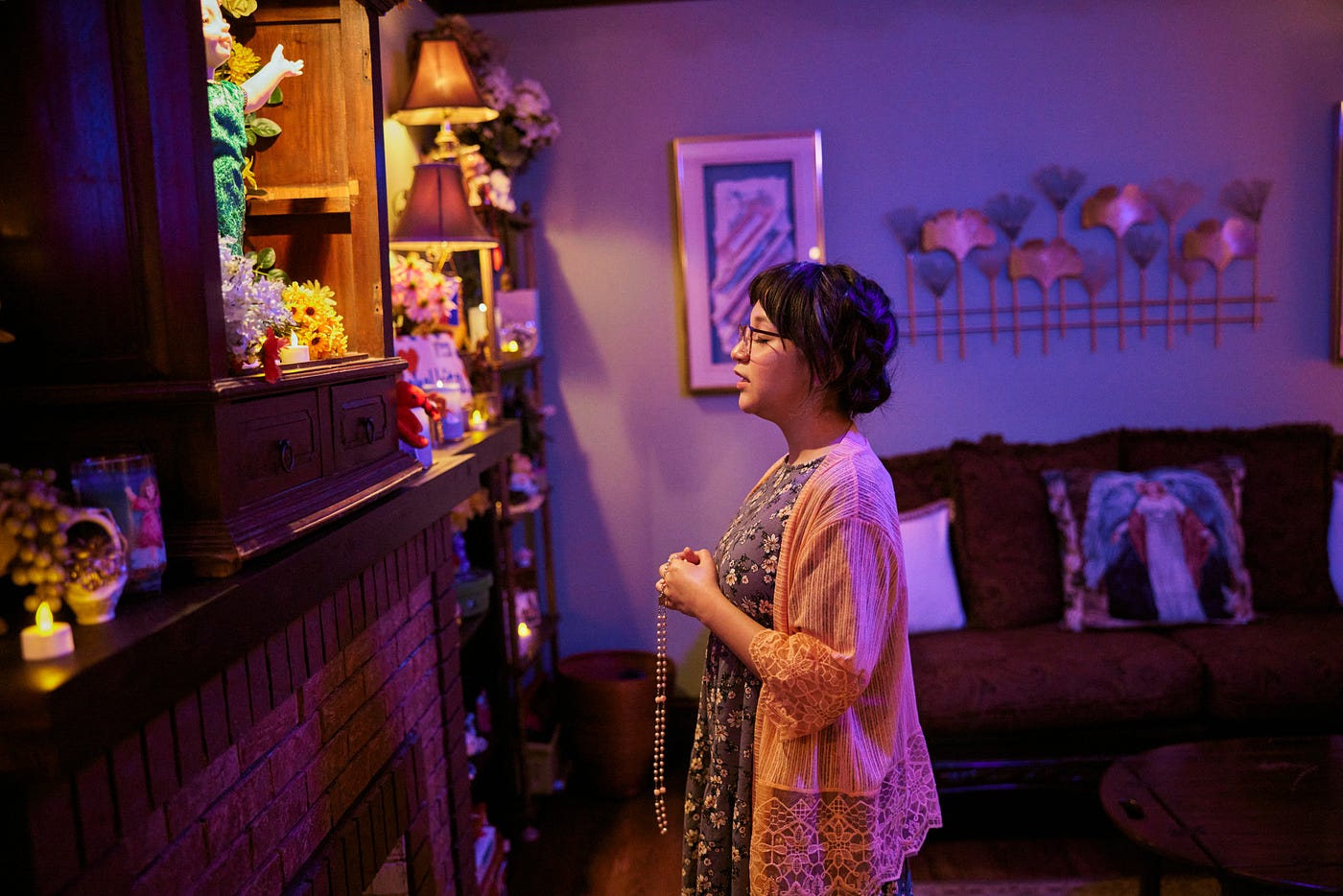
This week No Proscenium is brought to you by SEE TICKETS, which has proudly supported thousands of clients across the globe in areas as diverse as historic attractions like Stonehenge, immersive theater like The Burnt City, and important cultural touchstones like LA Pride.
Nestled between the Chicago River and Edens Expressway on the northside of Chicago sits Albany Park. This neighborhood is reported to be one of the most diverse areas in the United States, housing foreign born residents from Latin America, South Asia, and the Middle East. On the neighborhood’s southern border sits Fernstrom Fireproof Storage, built in 1929 and spanning 12,000 square feet across three stories. But instead of storing family heirlooms and furniture for safe keeping, the building now houses a living artistic embodiment of its residents’ lives.
Port of Entry is an interactive dark ride experience that takes place in this gutted and renovated storage building; its interior reconstructed to emulate a courtyard apartment building. Developed by the locally based Albany Park Theatre Project (APTP) and Third Rail Projects (TRP), it sees an audience of 28 enter the apartment building where performers, acting as both past and present tenants, guide randomly predetermined groups through their apartments and lives. Throughout the experience, the audience engages with the tenants through lively group activities, silently witnessing events, or one-on-one interactions.
The first stunning element is Port of Entry’s production design. While the courtyard is mostly a suggested space, a majority of hallways and apartments are fully functional and furnished. These spaces are instantly believable, but it wasn’t the quality or quantity of details at work that fooled me. It was the choice of which details were featured that pulled me in–the unconventionally shaped pantries, the sound of planes overhead approaching O’Hare, the fireplace sandwiched between built-in shelving units of equal height. Only when moving between floors, as the stairwell is a neutral, stylized space, did I remember this “building” was a massive set.

Yet, the building’s believability was only part of what made the production design fantastic. It was when the realism faded away, slowly replaced by intense elements of theatrically that left me breathless. Throughout Port of Entry, as tenants convey stories of mundane or intense struggles, the natural lighting and cityscape sounds fade away, replaced with anything from projection mapping to single spotlights illuminating the space underscored by sweeping orchestrations or a cacophony of discordant sounds. These dramatically emphasized moments drew me into each tenant’s story, their joy and sorrow intensely personified.
The stories they shared humbled me, a reminder that The American Dream is often out of reach, especially for those who come searching for it. In one apartment, I witnessed the struggles a South Asian family undertook to arrive in America, yet it was clearly only the beginning of their hardships. As I helped the children put away groceries donated by other tenants, it wasn’t enough to distract from hearing their mother’s frustrations in trying to navigate Chicago. Additionally, I watched a Hispanic mother and her three daughters’ lives become consumed in a vicious cycle of fundraising for their father to cross the border. While witnessing the family’s tribulations, I wondered about the costly nature of coming to the “Land of The Free,” weighing its worth in a new light.
These two interactions encapsulate the continual theme and message present throughout Port of Entry–how community, history, and human connection are integral to the immigrant experience. There is no overarching narrative or plot featured, merely a presentation of vignettes that are reflections of real experiences not regularly focused on in mainstream media. Port of Entry simply yet directly presents audiences with events they may never encounter in their own lives, succeeding in a noble, righteous, and important goal of making unique human experiences accessible to more people.

Above all, the most captivating, compelling element of Port of Entry is its performers. Since its founding, APTP’s Performing Ensemble has consisted of teens of color from first-generation or immigrant families. These performers play roles ranging from recently immigrated preteens who don’t speak English to elderly grandparents still struggling with assimilation. Other than their costumes, as I noticed no age makeup, the performers embodied characters only through body and voice.
Get Patrick B. McLean’s stories in your inbox
Join Medium for free to get updates from this writer.
SubscribeSubscribe
It’s been a decade since I’ve seen such stellar performance work in Chicago. The last time was when seeing Michael Shannon onstage in a black box space. And, with all due respect, Mr. Shannon could learn a thing from the APTP Performing Ensemble. These teens truly embodied their characters, effortlessly conveying complex, heady emotions subtly through movement and tone.
In particular, I was floored by teens playing older or parental roles that were incredibly adult oriented. One featured a mother balancing the needs of the child she left behind in Latin America with the child she’s raising separately in America. I saw no teen performer, only an exhausted mother. Port of Entry is not only a credit to the entire Performing Ensemble’s talent, but also their maturity, compassion, and understanding as humans. The world needs more people capable of such skills, on and off the stage.

As an immersive experience, Port of Entry succeeds in nearly every regard except for one key element–audience engagement. It’s a unique situation though, and my frustrations are more academic and ponderous in nature.
The experience begins with an audio recording that’s essentially a traditional curtain call announcement. The only element regarding audience engagement pertains to using the restroom or requiring other similar assistance. Once the experience began, audience interaction felt frigid and awkward, especially in the first hour.
My fellow audience members appeared incredibly hesitant to engage, whether with short responses to questions or by taking an offered item only after a long, noticeable pause. In moving through the apartments, I’d thank the person, be it performer or audience member, who’d held open a door. The silence I received was deafening, and I felt like I’d committed some faux pas.
To be clear, I place zero responsibility on these performers. They are young, and should be focused on developing their performance skills. They’re allowed to freeze up or stumble, as it takes time to master both acting and improv, let alone combining the two on the fly. Audience onboarding is an age-old struggle, but I feel that more could have been done to prepare the audience through an expanded onboarding process or pre-show activity. Or, rather simply and unfortunate if so, could Chicago audiences still are not be prepared or understand immersive theatre?
Overall, Port of Entry is a magnificent experience, showcasing both the triumphs and heartache of the immigrant experience in Chicago. With its profound message skillfully laid in throughout every narrative beat that’s excellently and expertly conveyed through talented teen performers, audiences are in for a truly unique and unforgettable evening.
Port of Entry currently runs through August 12th, returning in the fall from October 6th to December 16th, with 2024 dates yet to be announced. Tickets range from free to $140, utilizing the Pay What You Can ticketing model.
Thanks again to SEE TICKETS for sponsoring this year’s Next Stage Immersive Summit Making An Impact Pillar.

Discover the latest immersive events, festivals, workshops, and more at our new site EVERYTHING IMMERSIVE, new home of NoPro’s show listings.
NoPro is a labor of love made possible by our generous Patreon backers. Join them today!
In addition to the No Proscenium website, our podcast, and our newsletters, you can find NoPro on Facebook, LinkedIn, YouTube, Twitter, Instagram, in the Facebook community Everything Immersive, and on our Patreon Backer exclusive Discord.



















Discussion